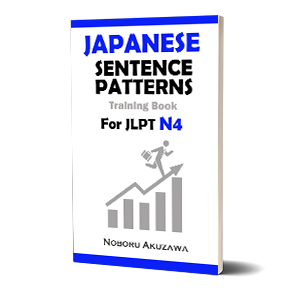Meaning: not … (negative form of i-adjectives)
Grammar Point
i-adjectives in Japanese form the negative by replacing the final 「い」 with 「くない」 (plain) or 「くありません」 (polite).
Formation:
i-adjective(remove い)+ くない(plain)
i-adjective(remove い)+ くありません(polite)
日本語 / にほんご / Japanese
(1) この木は高くない / 高くありません。
(2) あの魚は安くない / 安くありません。
(3) このバナナは甘くない / 甘くありません。
(4) あの通りはうるさくない / うるさくありません。
(5) この道は広くない / 広くありません。
(6) バス停は遠くない / 遠くありません。
ことばと表現 / Words & Expressions
木【き ki】tree
魚【さかな sakana】fish
安い【やすい yasui】cheap, inexpensive
バナナ【ばなな banana】banana
甘い【あまい amai】sweet
通り【とおり toori】street, road
広い【ひろい hiroi】wide, spacious
バス停【ばすてい basutei】bus stop
遠い【とおい tooi】far, distant
英語 / えいご / English
(1) This tree is not tall.
(2) That fish is not cheap.
(3) This banana is not sweet.
(4) That street is not noisy.
(5) This road is not wide.
(6) The bus stop is not far.
ひらがな / Hiragana
(1) このきは たかくない / たかくありません。
(2) あのさかなは やすくない / やすくありません。
(3) このばななは あまくない / あまくありません。
(4) あのとおりは うるさくない / うるさくありません。
(5) このみちは ひろくない / ひろくありません。
(6) ばすていは とおくない / とおくありません。
ローマ字 / Roman letters
(1) Kono ki wa takakunai / takaku arimasen.
(2) Ano sakana wa yasukunai / yasuku arimasen.
(3) Kono banana wa amakunai / amaku arimasen.
(4) Ano toori wa urusakunai / urusaku arimasen.
(5) Kono michi wa hirokunai / hiroku arimasen.
(6) Basutei wa tookunai / tooku arimasen.
- Adjectives learnjapanese by tae kim



























No comments yet.